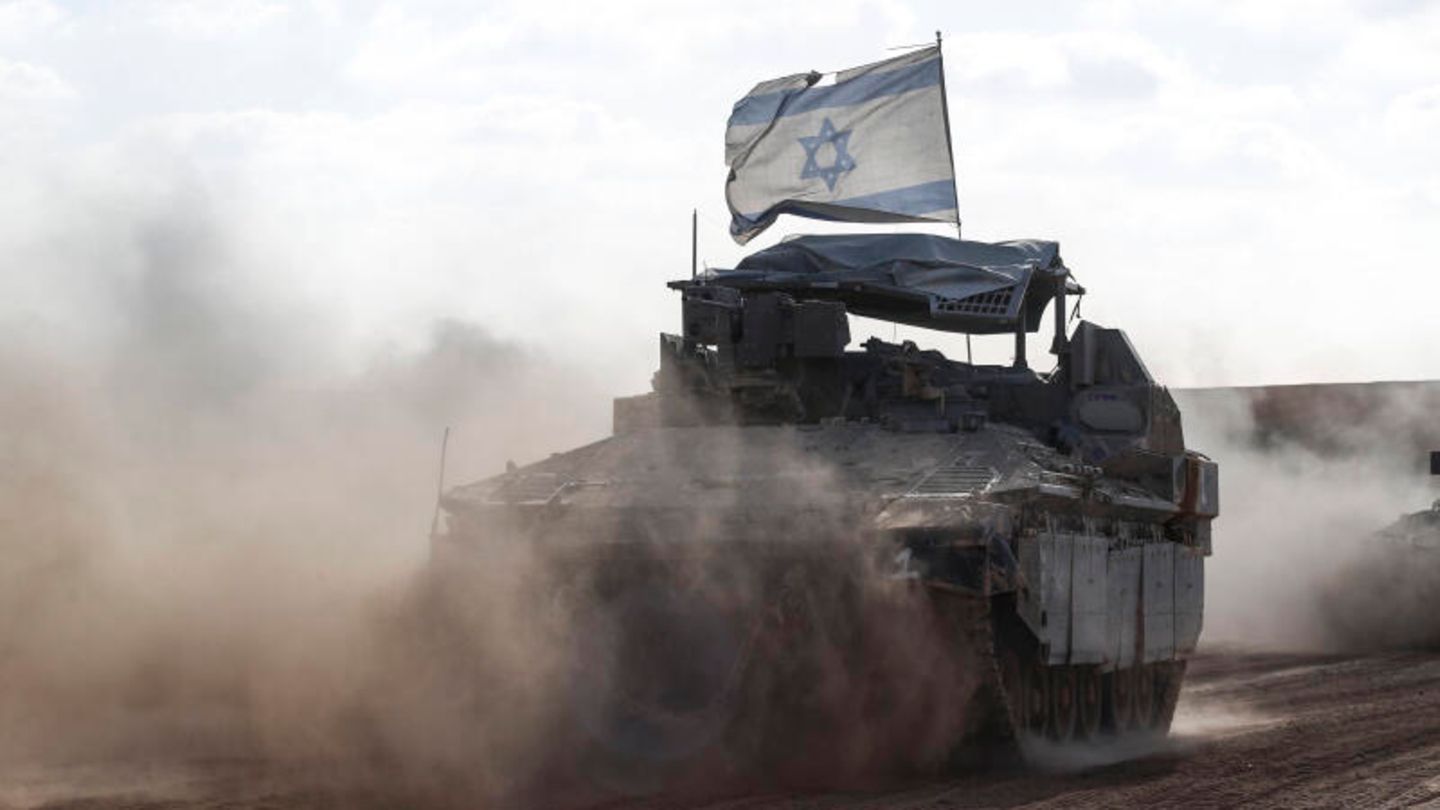Israel’s advance in the south of the Gaza Strip is highly controversial. The army has now claimed to have achieved an important goal in Rafah. How is Egypt reacting? The situation at a glance.
Israel’s army says it has taken control of the entire section of the Gaza Strip bordering Egypt, thereby achieving an important goal of its controversial Rafah offensive. The Islamist Hamas has used the area known as the Philadelphia Corridor to smuggle weapons, said army spokesman Daniel Hagari on Wednesday evening. There are around 20 tunnels leading to Egypt in the approximately 14-kilometer-long section. The information could not be independently verified at this time. Some of the tunnels were already known to Israel and Egypt, others were only discovered now, the Wall Street Journal quoted an Israeli military official as saying. The latest advance by the Israeli army could, according to the newspaper, trigger new tensions between Israel and Egypt.
The Egyptian state-affiliated television station Al-Kahira News reported, citing a high-ranking source, that the reports about the tunnels on the Egyptian border were not true. However, Egypt has flooded tunnels itself in the past, as they were said to have been used to transport weapons from the Gaza Strip to extremists in North Sinai. While the Israeli military official told the Wall Street Journal that Israel had informed Egypt about the cross-border tunnels that had now been discovered, a high-ranking Egyptian official denied this to the US newspaper. Israel is using these claims “to justify the continuation of the Rafah operation.”
At the beginning of May, Israeli troops advanced into parts of the city of Rafah in the southern Gaza Strip. They took over the only border crossing from the sealed-off coastal area to Egypt on the Palestinian side.
USA: Israel’s army continues to act in a targeted and limited manner
The Israeli forces in Rafah have so far largely concentrated on gaining control of the border area with Egypt. The area is not as densely populated as other parts of Rafah. The US government has been warning Israel for months about the dangers that an operation in the densely populated urban areas could pose to the civilian population, but so far it has not seen any signs of a large-scale ground offensive by the ally in the area. “I cannot confirm whether they have taken the (Philadelphi) corridor or not, but I can tell you that their movements along the corridor did not come as a surprise to us and were consistent with their plan to engage in targeted and limited combat against Hamas,” said John Kirby, communications director of the US National Security Council, on Wednesday.
Israel’s army last controlled the Philadelphia Corridor in 2005, before withdrawing from the Gaza Strip. On the Palestinian side, Hamas last exercised control there, having violently seized power in Gaza in 2007. Israel’s Prime Minister Benjamin Netanyahu said in March that the corridor must be controlled by Israel again after the war. This is the only way to ensure the demilitarization of the Gaza Strip. Israel’s military has now not only found tunnels along this area, but also dozens of Hamas rocket launchers, Hagari said. Only a few days ago, according to the Israeli military, several rockets were fired from Rafah at the Israeli coastal metropolis of Tel Aviv.
War in the Middle East
People on the run, Israel’s flag on the tank: the invasion of Rafah in pictures
Israel’s military destroys tunnel in Rafah
Israeli troops are now stationed in most of the Philadelphia Corridor, Israeli media reported, citing the army. In total, there are said to be 82 tunnel shafts in the area. Meanwhile, Israel’s army said it destroyed a one-and-a-half kilometer long Hamas tunnel system near Rafah. The entrance was around 100 meters from the border crossing with Egypt and led to a branched underground route, Hagari said. Hamas used the tunnel system to attack soldiers and transport weapons. Rockets, explosive devices and other weapons were found in the corridors at different depths, as well as several rooms and bathrooms.
“Hamas is in Rafah,” said Hagari. They are also holding hostages there. That is why they will continue to advance into the city. According to the media, three Israeli soldiers were killed the day before when a booby trap exploded in a building in Rafah. According to the army, this means that 639 soldiers have been killed on the Israeli side since the war began on October 7 last year. According to the Hamas-controlled health authority, more than 36,100 people have died on the Palestinian side. The authority does not differentiate between civilians and fighters in this number, which is difficult to verify independently.
The war was triggered by a massacre in Israel on October 7, which left more than 1,200 people dead, carried out by terrorists from Hamas and other groups. According to Israel’s National Security Advisor, the war will last at least until the end of the year. “We can expect at least another seven months of fighting this year,” Tzachi Hanegbi told Israeli broadcaster Kan on Wednesday.
Activists: Israel responsible for deadly attacks in Syria
Meanwhile, in northwest Syria, according to human rights activists, a child and three members of the Lebanese Hezbollah militia were killed in two attacks presumably carried out by the Israeli army. In the port city of Banijas, the impact of an Israeli missile and a Syrian anti-aircraft missile led to two explosions, the Syrian Observatory for Human Rights, based in Great Britain, announced on Wednesday evening. There was also an Israeli attack in the area surrounding the city of Homs. This was aimed at a military base. The Hezbollah members killed in the attack are said to be Syrians. Israel’s military said it wanted to investigate the reports.
Israel’s air force is repeatedly bombing targets in Syria. The government of the Jewish state wants to prevent arch-enemy Iran and its allied militias from expanding their military influence in the neighboring country. Iran is one of Syria’s most important allies. Since the beginning of the Gaza war, Israel’s attacks, which are usually not officially confirmed, have increased.
Source: Stern
I have been working in the news industry for over 6 years, first as a reporter and now as an editor. I have covered politics extensively, and my work has appeared in major newspapers and online news outlets around the world. In addition to my writing, I also contribute regularly to 24 Hours World.




